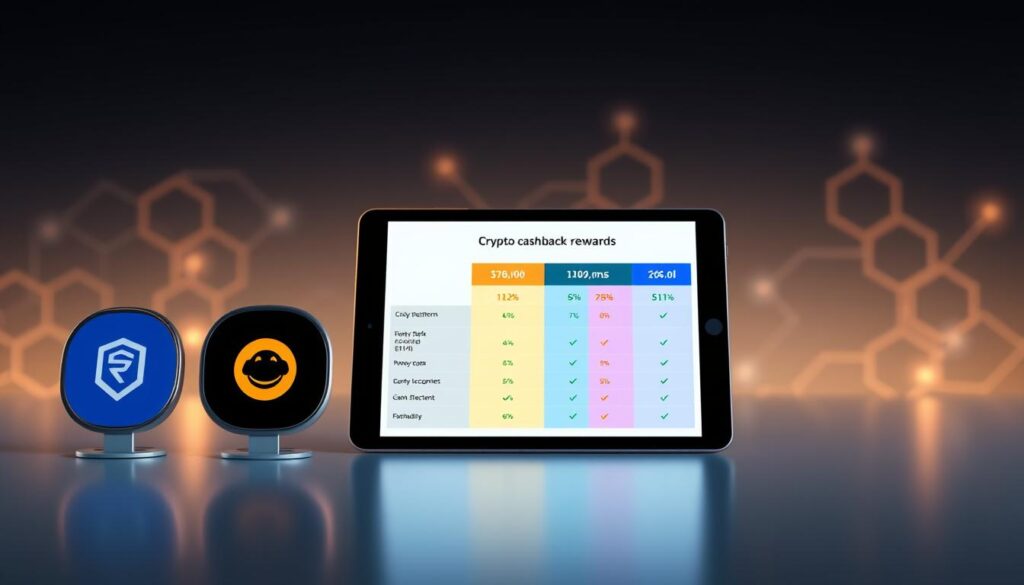Now Reading: Crypto API Integration: Benefits and Implementation
- 01
Crypto API Integration: Benefits and Implementation
Crypto API Integration: Benefits and Implementation
The digital asset landscape evolves faster than ever, with new trading platforms and blockchain innovations reshaping markets daily. For developers creating financial tools, access to precise data isn’t just helpful—it’s mission-critical. Whether building analytics dashboards or automated trading systems, reliable information fuels every decision.

Modern applications demand real-time metrics like price fluctuations, transaction volumes, and market trends. These insights power user-facing features while maintaining compliance with shifting regulations. Yet connecting directly to blockchain networks often requires specialized expertise, creating barriers for many teams.
Third-party services simplify this process by offering standardized data streams and pre-built functionality. They handle complex tasks like node maintenance and protocol updates, letting developers focus on core features. This approach aligns with the growing benefits of digital currencies in global finance, where speed and accuracy define success.
Choosing the right solution involves balancing security, scalability, and latency requirements. Providers must demonstrate robust encryption while delivering sub-second response times during market volatility. The best platforms adapt as projects grow, supporting everything from startup prototypes to enterprise-grade systems.
Key Takeaways
- Real-time market data access is essential for competitive financial applications
- Third-party services abstract blockchain complexity without sacrificing security
- Scalability and uptime directly impact user retention and platform reliability
- Compliance features help navigate evolving digital asset regulations
- Vendor stability ensures long-term access to critical infrastructure
Overview of the Crypto API Landscape
The financial sector’s reliance on distributed ledger technology has surged, with institutions seeking real-time access to verified transaction records. This shift fuels demand for tools that simplify interaction with decentralized networks while maintaining security standards.

Market Trends and the Rise of Blockchain Data
Recent analysis shows a 214% increase in enterprise adoption of ledger-based systems since 2021. Financial platforms now require detailed metrics spanning asset movements, wallet activity, and network congestion patterns. These insights help businesses spot opportunities in volatile markets.
Decentralized finance protocols have particularly driven innovation, necessitating tools that handle complex operations like cross-chain swaps. Modern solutions now offer features exceeding basic price tracking, including automated contract execution and multi-signature wallet support.
The Role of Specialized Tools in Modern Development
Building financial applications no longer requires deep protocol expertise. Pre-built services handle node synchronization and data validation, freeing teams to concentrate on user experience design. Standardized interfaces accelerate project timelines while reducing infrastructure costs by up to 40%.
Leading platforms guarantee sub-second response times during peak trading hours, ensuring reliable performance. This reliability proves critical when handling sensitive operations like institutional-grade asset transfers or regulatory reporting.
Benefits of Crypto API Integration for Businesses and Developers
Modern financial platforms require robust tools to handle digital asset operations securely. Third-party solutions bridge this gap by offering ready-made infrastructure that accelerates development cycles while maintaining compliance standards.
Fortified Protection and Optimized Operations
Security remains paramount when handling digital assets. Professional services implement military-grade encryption and multi-factor authentication, reducing risks associated with manual key management. This approach prevents unauthorized access while ensuring audit-ready transaction records.
Efficient transaction management becomes achievable through pre-built tools. Businesses automate payment processing and wallet operations without maintaining expensive node networks. This efficiency directly impacts customer satisfaction through faster settlement times.
Comprehensive Market Insights at Scale
Instant market data feeds power trading algorithms and portfolio trackers. Platforms gain minute-by-minute price updates across global exchanges, enabling precise decision-making during volatility. Historical records spanning years let teams identify patterns and test strategies against past market behavior.
Cost savings emerge through reduced infrastructure needs. Developers bypass the complexity of running dedicated servers, reallocating resources to core features. Some providers even enable revenue streams through tiered data access models, creating new monetization opportunities.
These advantages combine to shorten development timelines significantly. Teams launch features faster while maintaining enterprise-grade reliability—a critical factor in competitive financial markets.
Understanding Blockchain APIs and Smart Contracts
Businesses across industries now use blockchain tools to automate processes and verify critical information. These systems transform how agreements are executed and data is analyzed, creating new efficiencies in digital operations.

Smart Contracts and Secure Transaction Processing
Automated agreements eliminate middlemen while maintaining trust. Platforms like BlockCypher enable developers to deploy code-driven contracts across Bitcoin, Ethereum, and other networks through unified tools. This approach ensures terms execute precisely when conditions are met—no manual oversight required.
Immutable records and cryptographic checks prevent tampering. Every action leaves an auditable trail, reducing disputes in supply chains or financial settlements. Such security features make these systems ideal for sensitive transactions requiring absolute accuracy.
Leveraging Blockchain Data for Informed Decision-Making
Services like The Graph unlock real-time insights from decentralized networks. Developers query wallet activity, token movements, and contract interactions directly—critical for predicting market shifts or user preferences.
Patterns emerge when analyzing years of blockchain data. Teams spot emerging trends faster, adjusting strategies before competitors react. This agility separates thriving platforms from those stuck relying on outdated information.
Implementing Crypto API Integration: A Practical Guide
Developers seeking to connect applications with live market information start by establishing secure pathways to verified data sources. This process requires selecting tools that balance flexibility with enterprise-grade reliability.

Endpoint Configuration and Security Protocols
Begin by creating a project in platforms like Apidog, which centralizes testing and documentation. Navigate to your developer account dashboard to generate workspace credentials. Most solutions use RESTful interfaces, requiring precise endpoint URLs from provider documentation.
Authentication methods vary widely across services. Binance mandates API keys with granular permissions, while Coinbase offers public endpoints for basic price data. Always store credentials in encrypted environments and implement IP whitelisting for added protection.
Streamlining Data Flow and Response Handling
Automated systems require scheduled calls with built-in error recovery. Set rate limits to prevent overloading providers during volatility spikes. Responses typically arrive in JSON format—validate each payload before processing to avoid application crashes.
For example, Coinbase’s BTC-USD endpoint returns simple price structures, while Binance responses include complex order book details. Use try-catch blocks to manage unexpected formats or network timeouts. Proper error logging accelerates troubleshooting during critical market movements.
Successful implementations maintain access to real-time feeds while adhering to provider rate limits. Regular audits ensure compliance as applications scale, preventing service disruptions that could impact user trust.
Leveraging Developer Tools for Advanced Functionality
Efficient application development now relies on specialized platforms that simplify complex workflows. These solutions reduce manual coding while maintaining precision in handling sensitive operations. Teams achieve faster deployment cycles through pre-configured environments designed for modern financial systems.
Integrating Platforms for Streamlined Testing
Comprehensive tools like Apidog centralize critical processes across development stages. Their interfaces let teams define endpoints, simulate transactions, and validate responses within unified dashboards. Automated workflows test edge cases – from network failures to sudden price swings – before live deployment.
This approach cuts debugging time by 60% compared to manual methods. Built-in documentation generators ensure consistency across teams, while monitoring features track performance metrics in real-time. Developers gain actionable insights to refine code quality without disrupting active services.
Optimizing Performance With Live Information Streams
High-frequency applications require intelligent data management strategies. Advanced platforms implement connection pooling and caching mechanisms to handle volatile market feeds. One trading firm reduced latency by 42% using dynamic request prioritization during Bitcoin price fluctuations.
Real-time dashboards highlight bottlenecks in data pipelines, enabling instant adjustments. These optimizations prove vital when building systems that process thousands of transactions per second. As platforms evolve, tools supporting data-driven incentive models will dominate next-generation financial infrastructure.
Exploring a Range of Cryptocurrency APIs
Developers face diverse options when selecting tools to power financial applications. Leading platforms now offer specialized solutions tailored to distinct use cases—from retail trading interfaces to institutional analytics systems.
Product Roundup: Key Players and Their Features
Coinbase delivers comprehensive price tracking across hundreds of digital assets. Its interface provides minute-by-minute updates alongside historical charts—essential for applications needing reliable benchmarks.
Binance caters to professional traders with high-speed execution tools. The platform supports complex order types and real-time market depth visualization. Advanced security protocols meet institutional demands during volatile periods.
CoinGecko excels in altcoin coverage, tracking over 6,000 assets. Beyond basic metrics, it offers developer activity scores and community growth trends. This variety makes it ideal for research platforms analyzing emerging opportunities.
Each solution addresses different market needs. Some prioritize lightning-fast trading execution, while others focus on breadth of data. Choosing the right fit depends on balancing speed, coverage, and specialized features for your project’s goals.
FAQ
How does integrating blockchain tools improve transaction security?
Blockchain tools use decentralized verification and cryptographic protocols to reduce fraud risks. Features like smart contracts automate processes without intermediaries, while encryption ensures data integrity during transfers.
What advantages do real-time market feeds offer trading platforms?
Instant price updates and historical trends help platforms execute trades faster, identify patterns, and adjust strategies. This data supports risk assessment and improves user experience with accurate analytics.
Which authentication methods ensure safe access to blockchain networks?
Multi-signature wallets, OAuth 2.0, and API keys with role-based permissions are common. Tools like AWS KMS or hardware security modules add layers of protection for sensitive operations.
How can developers test decentralized app functionality effectively?
Platforms like Apidog or Postman simulate network interactions, validate smart contract logic, and monitor gas fees. Automated testing frameworks also check edge cases and scalability under load.
What role do smart contracts play in automating digital agreements?
These self-executing programs enforce terms without third parties. For example, Ethereum-based contracts trigger payments once predefined conditions are met, reducing delays and human error.
Which providers lead in delivering reliable blockchain data services?
CoinGecko offers comprehensive market insights, while Chainlink provides real-time oracles. Alchemy and Infura are widely used for scalable node infrastructure and developer support.












